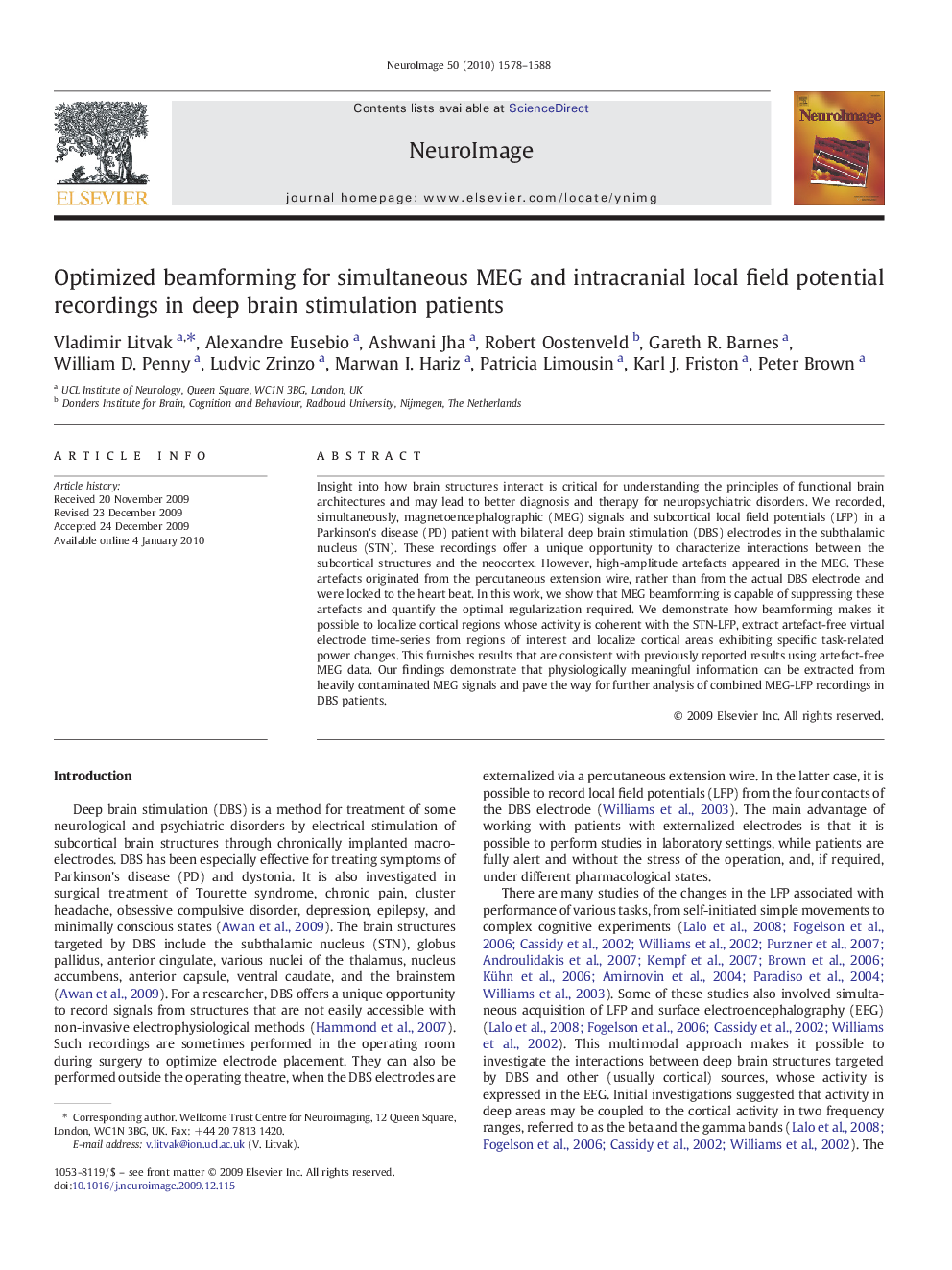| Article ID | Journal | Published Year | Pages | File Type |
|---|---|---|---|---|
| 6037326 | NeuroImage | 2010 | 11 Pages |
Abstract
Insight into how brain structures interact is critical for understanding the principles of functional brain architectures and may lead to better diagnosis and therapy for neuropsychiatric disorders. We recorded, simultaneously, magnetoencephalographic (MEG) signals and subcortical local field potentials (LFP) in a Parkinson's disease (PD) patient with bilateral deep brain stimulation (DBS) electrodes in the subthalamic nucleus (STN). These recordings offer a unique opportunity to characterize interactions between the subcortical structures and the neocortex. However, high-amplitude artefacts appeared in the MEG. These artefacts originated from the percutaneous extension wire, rather than from the actual DBS electrode and were locked to the heart beat. In this work, we show that MEG beamforming is capable of suppressing these artefacts and quantify the optimal regularization required. We demonstrate how beamforming makes it possible to localize cortical regions whose activity is coherent with the STN-LFP, extract artefact-free virtual electrode time-series from regions of interest and localize cortical areas exhibiting specific task-related power changes. This furnishes results that are consistent with previously reported results using artefact-free MEG data. Our findings demonstrate that physiologically meaningful information can be extracted from heavily contaminated MEG signals and pave the way for further analysis of combined MEG-LFP recordings in DBS patients.
Related Topics
Life Sciences
Neuroscience
Cognitive Neuroscience
Authors
Vladimir Litvak, Alexandre Eusebio, Ashwani Jha, Robert Oostenveld, Gareth R. Barnes, William D. Penny, Ludvic Zrinzo, Marwan I. Hariz, Patricia Limousin, Karl J. Friston, Peter Brown,
